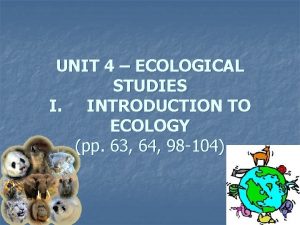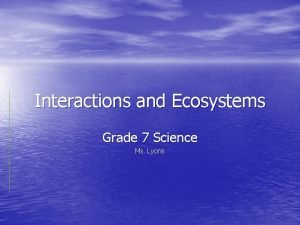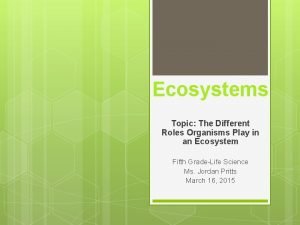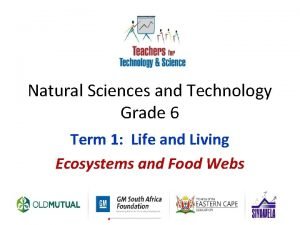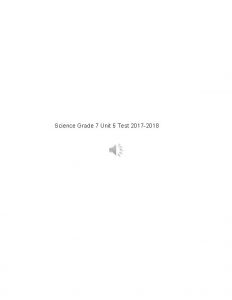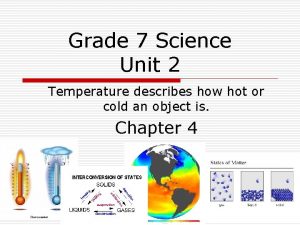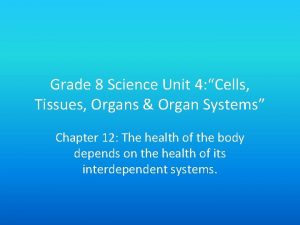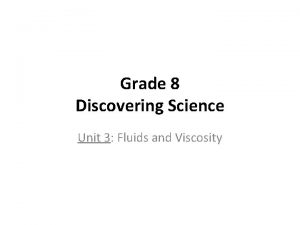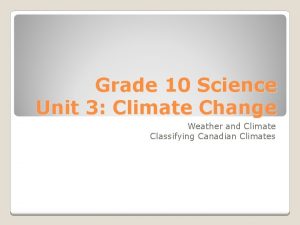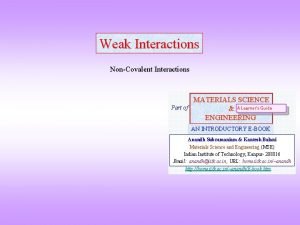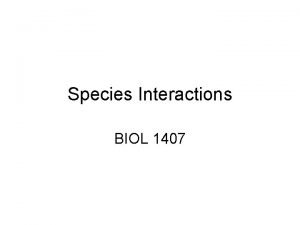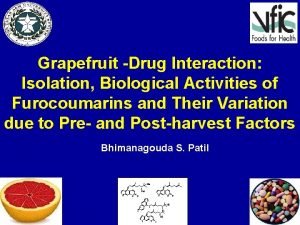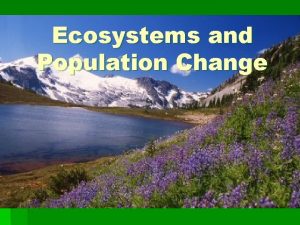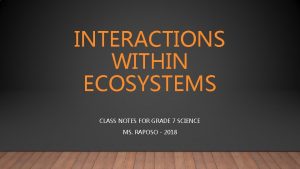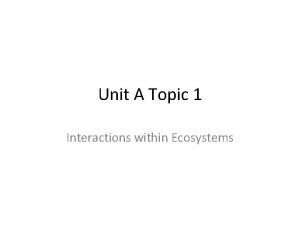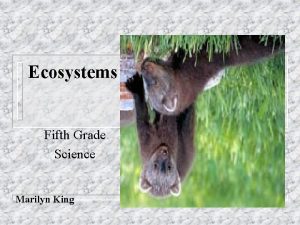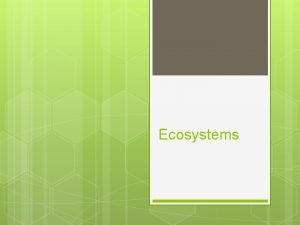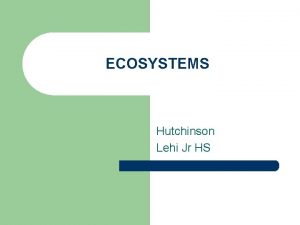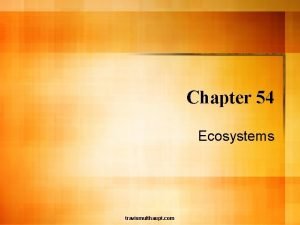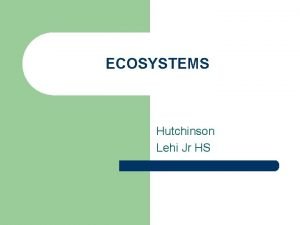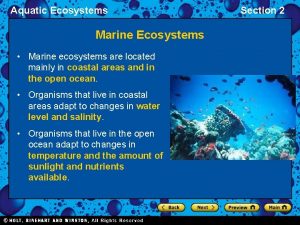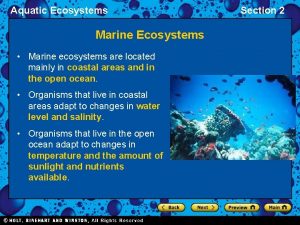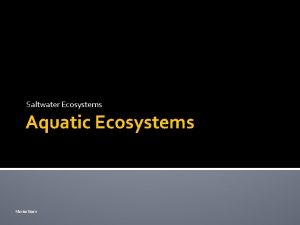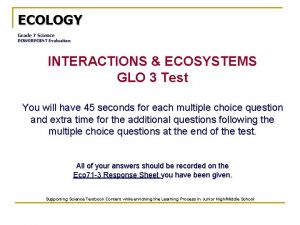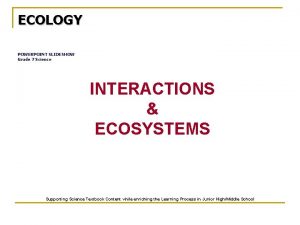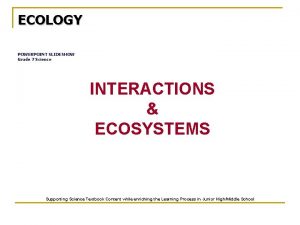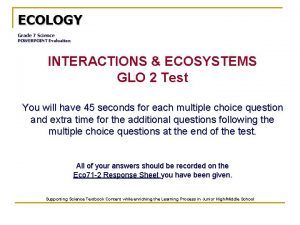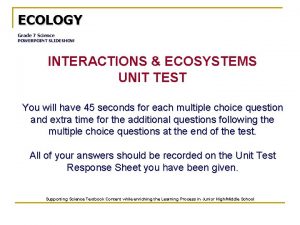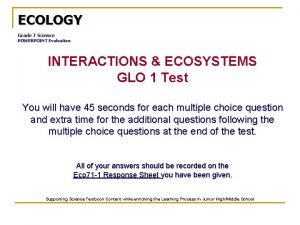Grade 7 Science Unit 1 Interactions Within Ecosystems
























- Slides: 24

Grade 7 Science Unit 1 Interactions Within Ecosystems Chapter 1

Ecosystem: What is it? Open book to page 4 -5

What is an Ecosystem? p. 5 Local Area: Gros Morne Living Things Local Conditions

Ecosystems. . . Can be described by the types of organisms and the conditions found there. include abiotic (non-living) and biotic (living) things.

Can be large

Can be small

What do living things need for survival? With a partner, generate a list of the things that all living things must have for survival.

Types of Ecosystems. . . Ocean Forest Pond Arctic

Read p. 10 -12 and either complete the following chart on each type of ecosystem. Ecosystem Flora Fauna Abiotic plants animal Cond. s 1. Oceans 2. Forest 3. Pond 4. Arctic

Core Lab Activity 1 -2 A p. 2021 Field Trip to the Schoolyard

The Abiotic Environment The non-living parts of the environment. The upper and lower limits in which an organism can survive is called the organism’s range of tolerance.

Range of Tolerance Arctic dwarf willow (Tundra) (tropics) Palm tree

Coral Reef Range of Tolerance

Treeline Transition from trees to no trees! Higher altitude (height) = too dry and cold for trees

Things that affect the Zone of Tolerance include: 1. Intensity of sunlight 2. Temperature 3. Soil 4. Air and wind 5. Water

The Biotic Environment The living parts of the environment. Includes MANY species of organisms ( living things). Species: a group of organisms that can reproduce to produce similar, fertile organisms.

Levels of Organization p. 25 ecosystem community population individu al

Habitat –vs- Niche Habitat: the organism’s address; where does it live? Ex. A moose’s habitat is the boreal forest.

Niche: the organism’s job; what role does the organism play in its environment. It includes: where it lives how it obtains food how it affects its environment

Ex. A moose lives in the boreal forest, it is a herbivore (plant eater), it provides a home for parasites and it provides food for coyotes.

Think About It. . . Seabirds! P. 26(7) Complete the dichotomous key

Interactions in the Environment Biotic - abiotic

Abiotic - abiotic

Biotic - biotic
 Interactions within ecosystems grade 7
Interactions within ecosystems grade 7 Which of the following tells you population density
Which of the following tells you population density Heterotrophs
Heterotrophs Chapter 5 evolution and community ecology
Chapter 5 evolution and community ecology Grade 7 ecosystems
Grade 7 ecosystems Ecosystems jeopardy 5th grade
Ecosystems jeopardy 5th grade Ecosystem for grade 6
Ecosystem for grade 6 On thursday
On thursday Which of the following adaptations helps birds fly?
Which of the following adaptations helps birds fly? Grade 7 science unit 2
Grade 7 science unit 2 How do you classify uniform and non-uniform mixtures?
How do you classify uniform and non-uniform mixtures? Grade 8 science unit 4
Grade 8 science unit 4 Example of fluid
Example of fluid Unit 3 climate
Unit 3 climate Unit 10, unit 10 review tests, unit 10 general test
Unit 10, unit 10 review tests, unit 10 general test Smallest living unit of life
Smallest living unit of life Noncovalent interactions
Noncovalent interactions Congress formal and informal powers
Congress formal and informal powers Competition symbiotic relationship
Competition symbiotic relationship Parasitism pictures
Parasitism pictures Role of quantitative research
Role of quantitative research Sertraline interactions
Sertraline interactions Graphing monetary and fiscal policy interactions
Graphing monetary and fiscal policy interactions Properties and interactions of magnets
Properties and interactions of magnets Grapefruit-drug interactions chart
Grapefruit-drug interactions chart


